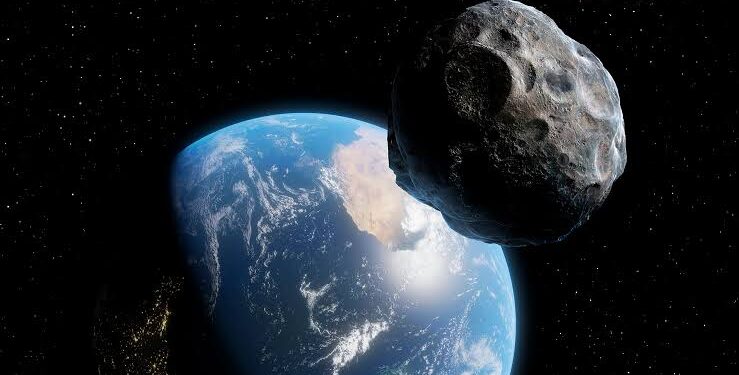By John Ikani
An asteroid estimated to be a kilometer (3,451 feet) wide will fly by Earth on January 18.
Known as asteroid (7482) 1994 PC1, the space rock more massive than two Empire State Buildings, will safely pass by the planet from a distance of 1.9 million km, at a speed of approximately 76,192kph, in the late hours of January 18.
NASA has been tracking the space rock since it was discovered by Scottish-Australian astronomer Robert McNaught in 1994.
Asteroids are rocky leftovers from the formation of the early system. More than 1.1 million have been found but many remain undiscovered.
Nobody expects 7482 (1994 PC1) to hit Earth, but it’s the closest the asteroid will come for the next two centuries, according to NASA projections. The flyby is expected to take place on Tuesday January 18 at 4.51 p.m. ET.
It won’t be the largest asteroid to ever sweep past Earth. That honor belongs to the asteroid 3122 Florence (1981 ET3), which flew by and missed colliding with Earth on September 1, 2017. That asteroid is estimated to be between 2.5 miles and 5.5 miles wide, and it make another pass again on September 2, 2057.
While an asteroid crashing into Earth any time soon is unlikely, it is not impossible.
In 2013, an asteroid crashed into the Russian city of Chelyabinsk. It exploded after entering Earth’s atmosphere and released energy equivalent to 500 kilotonnes of TNT.
The incident caused more than 3,600 apartment windows to shatter, injuring about 1,000 people.
While 7482 (1994 PC1) is unlikely to be visible with the naked eye, amateur astronomers with a small telescope should be able to spot it, according to the website EarthSky.com.
In September this year, a NASA spacecraft will deliberately crash into an asteroid to change its motion in space — testing technology developed to deflect an asteroid hit.
Known as the DART mission, or the Double Asteroid Redirection Test, the spacecraft is aiming for Dimorphos, a small moon orbiting the near-Earth asteroid Didymos.



































